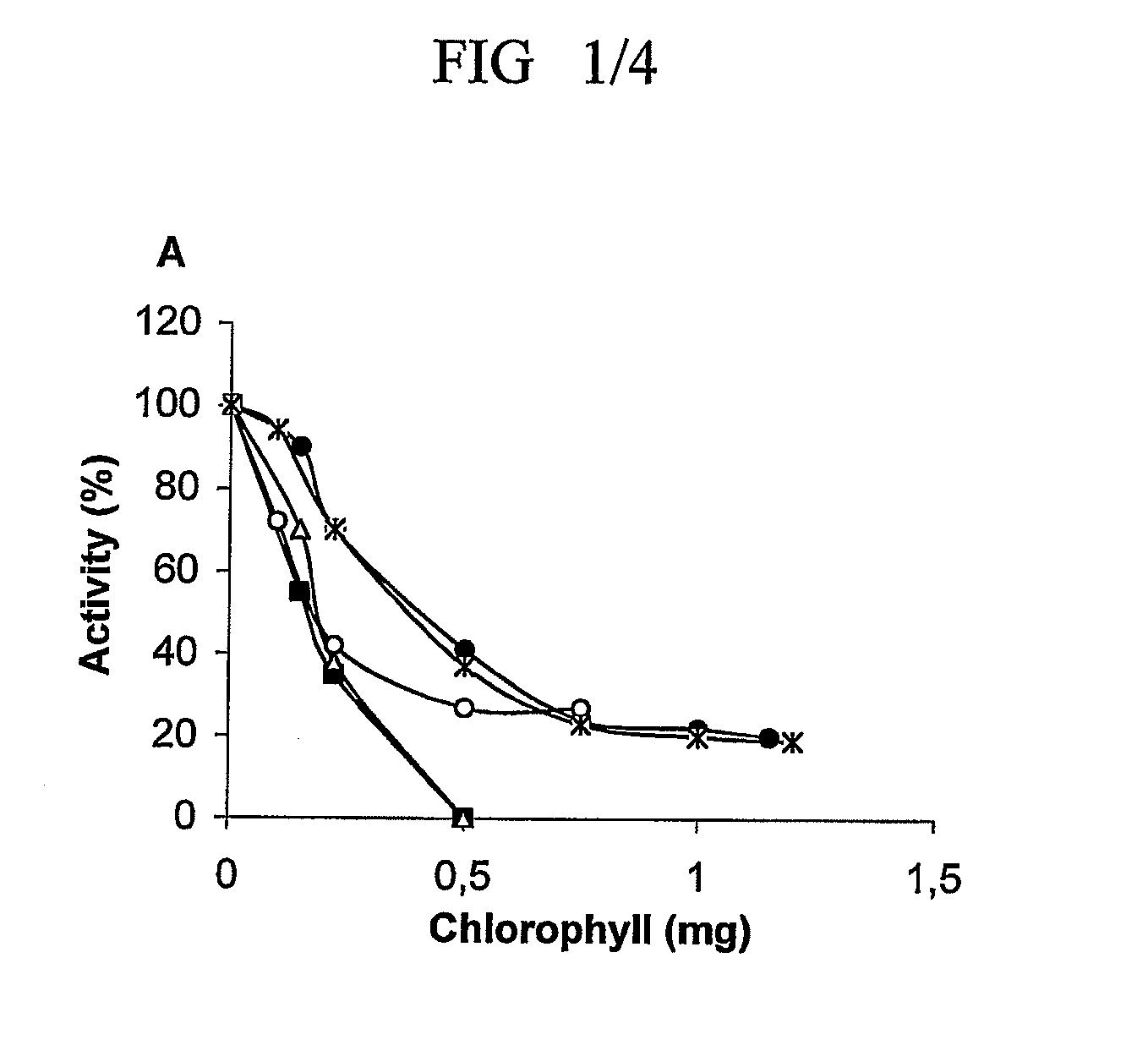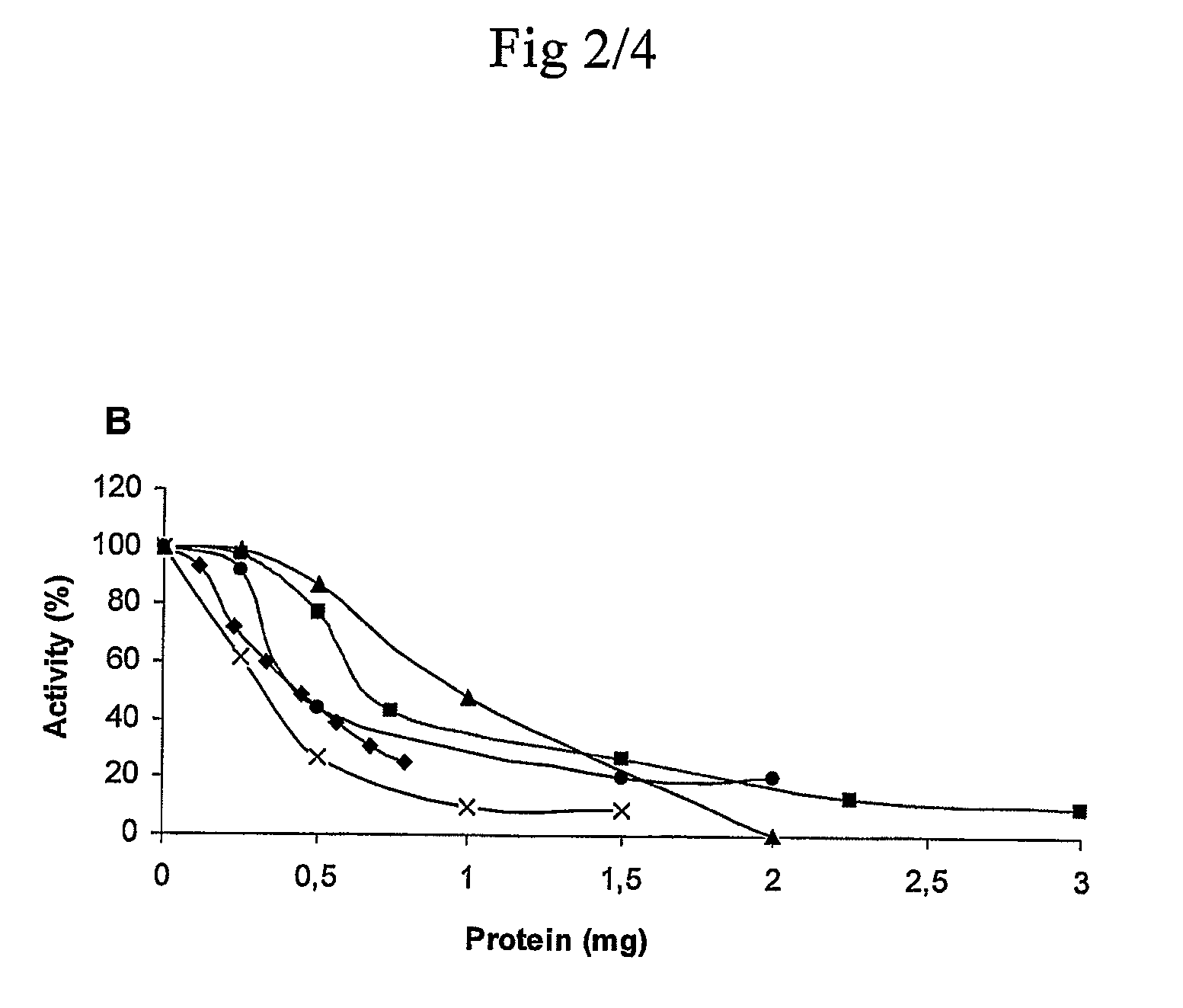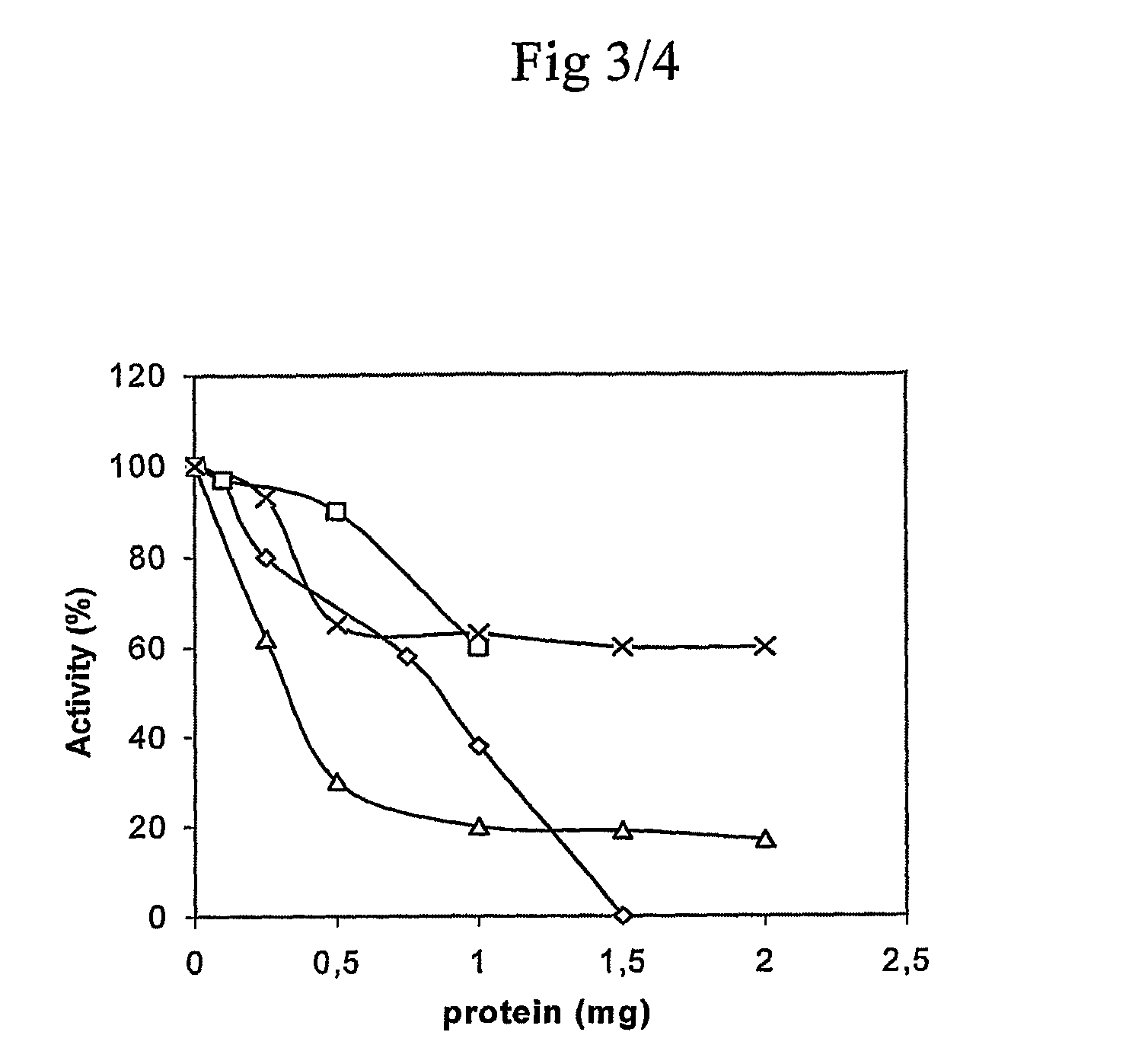Use of plant cell membrane for the treatment of obesity
a plant cell membrane and obesity technology, applied in the field of obesity treatment with plant cell membranes, can solve the problems of increasing world-wide obesity, steatorrea, and inhibiting all types of lipases, so as to reduce body weight and/or blood lipids, suppress appetite, and reduce lipolytic activity.
- Summary
- Abstract
- Description
- Claims
- Application Information
AI Technical Summary
Benefits of technology
Problems solved by technology
Method used
Image
Examples
example 1
Preparation of Membranes and Membrane Proteins
[0045]Thylakoids were isolated as described in Danielsson et al. Biochim Biophys Acta 1608, 53-61 (2004) for use in the lipase assay. For preparing food, the thylakoids were isolated as follows: Leaves were homogenised in a blender and filtered through four layers of nylon mesh (20 μm). The filtrate was centrifuged at 5000 g for 10 min to collect the thylakoids. These were washed by resuspension in water and recentrifuged as before. Lipid extraction: 4 ml thylakoid suspension (3.8 mg chlorophyll / mL) mixed with 40 mL chloroform / methanol was incubated for 1 hr on ice. After centrifugation at 4000 g for 10 min the pellet was extracted for a second time and centrifuged as before. The pellet was dried in air and extracted with 10 mL of the buffer solution used for thylakoid isolation on ice to remove water soluble proteins. The mixture was centrifuged at 4000 g for 10 min and the pellet collected. This is named “membrane protein fraction” (FI...
example 2
Crude Preparation of Cell Membranes (Thylakoids)
[0046]Leaves of spinach, either fresh or frozen, were cut into pieces. These were suspended in water and disintegrated by a mechanical mincer until most of the cells are broken. The slurry was then filtered through a nylon net with a pore size of 20 μm. The filtrate is centrifuged at 2000×g for 5 min. The pellet was resuspended in water and recentrifugated at 2000×g for 5 min. The pellet was stored frozen or dried. Alternatively, a precipitating agent was added to the filtrate: The filtrate was acidified by addition of acid to a low pH, such as pH 4-5, so that the membranes precipitate. The precipitate was washed by resuspension in water at pH 4-5 and resettling of the precipitate. The precipitate is collected.
example 3
Preparation of Crude Cell Membrane Fractions
[0047]Cells, suspended in water, were further disintegrated mechanically by a mincer until most of the cells are broken. The slurry was filtrated to remove unbroken cells and large fragments of cell walls. The filtrate was centrifuged at 10 000×g for 10 min. The pellet was resuspended and recentrifuged at 10 000×g for 10 min. The pellet was collected and stored frozen or dried.
PUM
| Property | Measurement | Unit |
|---|---|---|
| size distribution | aaaaa | aaaaa |
| time | aaaaa | aaaaa |
| pH | aaaaa | aaaaa |
Abstract
Description
Claims
Application Information
 Login to View More
Login to View More - R&D
- Intellectual Property
- Life Sciences
- Materials
- Tech Scout
- Unparalleled Data Quality
- Higher Quality Content
- 60% Fewer Hallucinations
Browse by: Latest US Patents, China's latest patents, Technical Efficacy Thesaurus, Application Domain, Technology Topic, Popular Technical Reports.
© 2025 PatSnap. All rights reserved.Legal|Privacy policy|Modern Slavery Act Transparency Statement|Sitemap|About US| Contact US: help@patsnap.com



